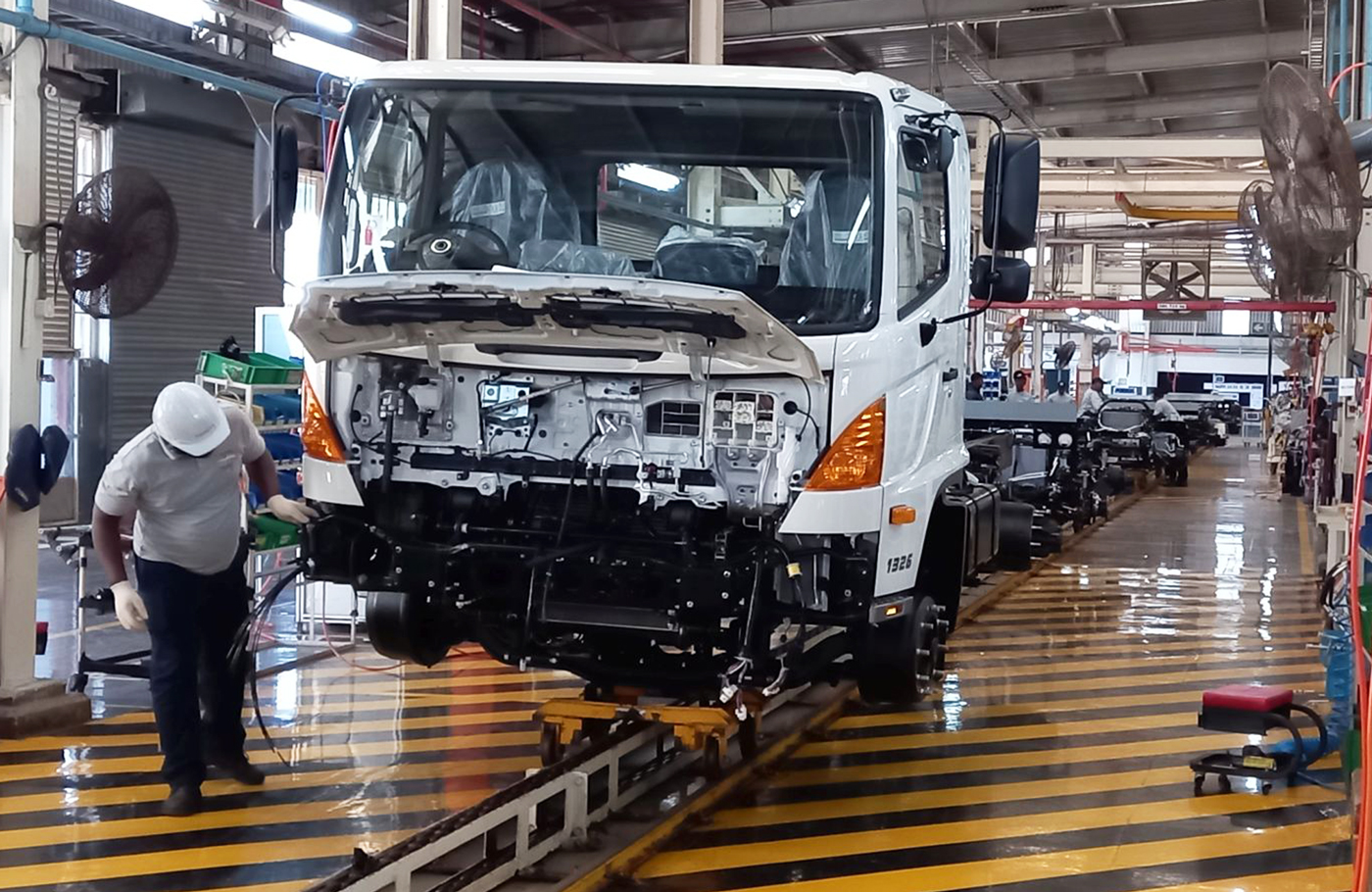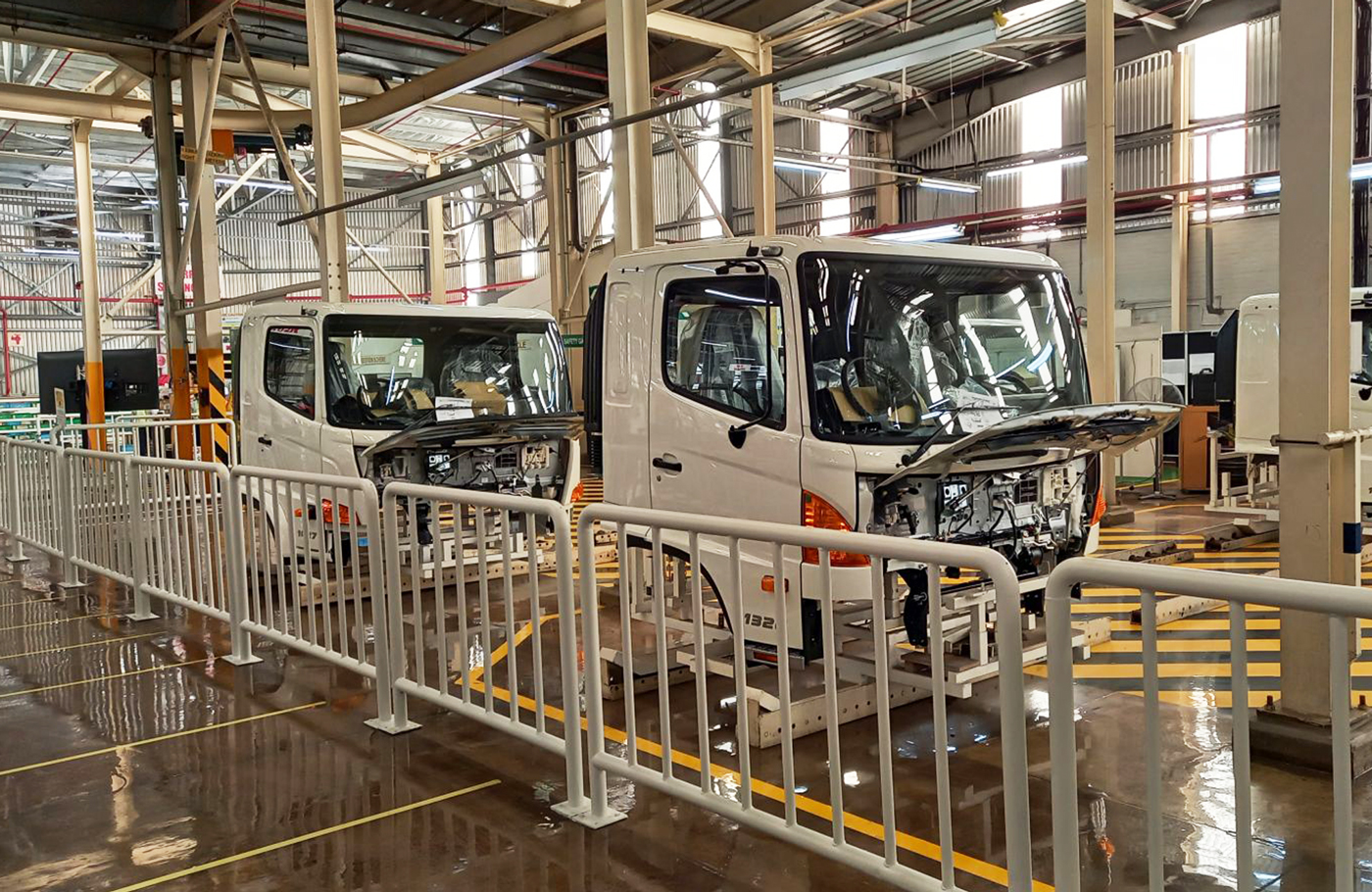First Hino 700 emerges from SA plant
First Hino 700 emerges from SA plant
The first Hino 700 to poke its nose out of the assembly plant in Prospecton, Durban is the largest vehicle ever assembled at the plant. It also cements Hino South Africa as a competitor in the extra-heavy commercial arena, writes COLIN WINDELL.
The Hino 700 has completed the Hino line-up for South Africa, with the manufacturer able to offer transport solutions in every segment of the market from light commercial (Hino 200) to extra-heavy. The 700 will be available in four derivatives: tipper, freight carrier, and two truck tractor variants.
All derivatives are fitted with a turbocharged and intercooled 302-kW engine with 1,961Nm of torque. The truck tractor additionally offers a
331-kW/2,157-Nm engine option. All the trucks drive through a 16-speed ZF automated manual transmission that allows fully automatic shifting with an optional manual override.
Pieter Klerck, general manager of Hino South Africa, explains that the Hino 700 previously offered locally as a fully imported unit claimed 2 to 3% of the market. “With the significant improvements that have been made to the new 700, we confidently expect to be able to improve that to around a 10% share of the market, competing specifically in the short to medium haul sector,” he asserts.
“This new Hino 700 is hugely important to the company beyond its abilities as a truck. When the floods devastated the entire Toyota factory premises, the Hino plant was one of the first elements to get back up and running. This first vehicle off the line is a tribute to the incredibly hard work put in by all the staff during and since that time to get us back up to speed.”
The new Hino 700 has undergone extensive development, including local testing, to finalise the specifications to suit South African conditions and legislative requirements.




From the outside, the 700 has a bolder, more assertive look with a new black grille emphasising the three-dimensional look, while on the 450 (331kW) the grille is silver. On all versions, a radar and camera are fitted as standard. These link to the standard adaptive cruise control, which is one of several safety enhancements that also include a lane departure warning system, pre-collision warning, and driver monitoring alert that observes posture to detect fatigue.
The cab’s interior now features more space and storage capacity, and the driver gets a high-functional 10-way adjustable seat with increased lumbar support. Throughout the cab, the ergonomics are improved and it features a seven-inch LCD display for the driver.
“In 2021, the EHCV market showed substantial growth,” says Klerck. “In 2022, it was the HCV segment that grew the most and, for 2023, the truck market is already up 11% on the same period last year, which is a good sign for the economy in general.”
The Hino plant has a total capacity of 5,000 units and the current plan for 2023 is to assemble 3,500 units across the range, equating to around 12 trucks a day coming offline. Hino assembles four models with 35 derivatives between them in total. Ahead of the 700 assembly, new equipment was installed including that used for chassis alignment and chassis assembly.
While improvements are constantly being made to the performance of the engines, the 700 will still run on Euro 2 specification; Klerck says both Hino SA and Hino Motors are acutely aware of the need to improve and limit harmful emissions.
“We are doing ongoing testing with Euro 3 and even Euro 5 units,” he notes. “But Hino Motors remains extremely cautious about releasing an engine without full confidence in the correct fuel supply. It is a situation we constantly monitor and will evaluate further.”
Published by
Focus on Transport
focusmagsa




